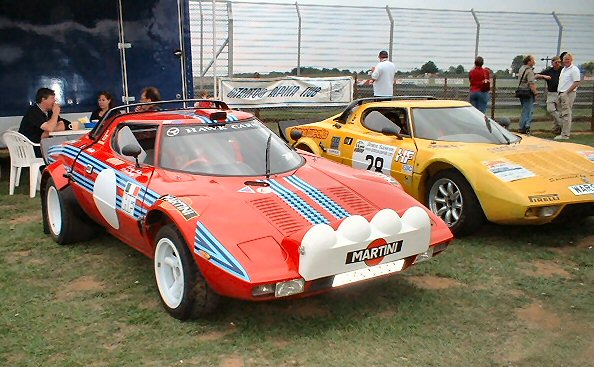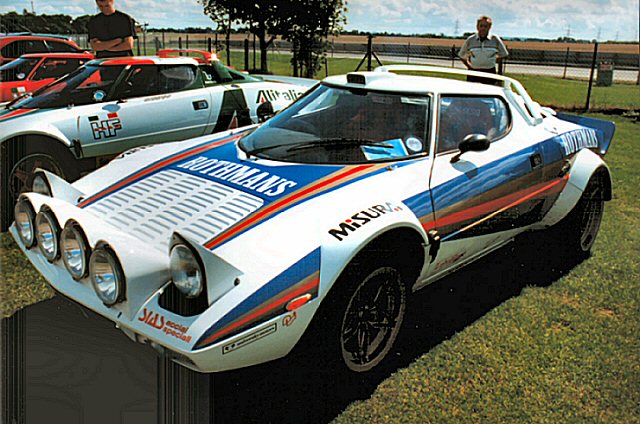Introduction
Over thirty years old. Does the Stratos really look that old a design?
| Super
Stratos! |
The
Stratos was an unreserved success. The
first ever purpose built rally car – and forerunner to the
Group B eighties cars - achieved all expected of it. Championship
victories for Lancia came in 1974, 1975 and 1976.
Fiat
Group then retired the car from the Championship for Makes to
make way for the 131 Abarth.
Privateers
continued to demonstrate just how much competition life was left
in the Stratos by winning into the early eighties. |
The whole Stratos
adventure seems very typical of the chemistry that makes for exciting
car building in Italy… One of their talented design gurus gets
a full-on passionate idea, and manages to cajole bully or dumbfound
one of the more conservative car organisations to actually commit. It
can only occur when the leaders of said car organisations are feeling
vulnerable enough to break with tradition and build there way out of
a problem.
Fortunately
for us the seventies was an age ripe with challenges and ideas. And
the seventies was also a moment when the concept of international rallying
was maturing in front of media arc lights and massed public appeal.
The rest, as they say, is pure Stratos.
In the case of the Stratos, its founding genius was Nuccio Bertone.
Champion of the mid-engined wedge shape sports car. While Bertone had
already shown the world some spectacular supercar versions of the ‘flying
wedge’, his mission was to deliver production versions of the
basic design to a more massive market. Very close on the heals of the
Stratos would come the X1/9, and fortunately again Bertone would not
take Fiat’s ‘No’ for an answer. But the X1/9 is another
story - told on other model pages.
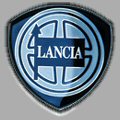
The making of the Stratos is a tale of two interests – two passions
really. One comes from Nuccio Bertone whose sheer genius for design
and vision – allied to dogged determination – made such
an impact in the sixties. The other is the plight of Lancia at the end
of the sixties, and what Fiat did to shake things up when they took
over in 1969.
Stratos in the Making - Early History
Of course, when it comes to mid-engined rally cars, the Stratos was
not first on the scene. By the end of the sixties the Alpine Renaults
had evolved into useful and competitive rally machines. And the 1600cc
incarnation was about to take the International Championship for Makes
when in 1970 the first of the Stratos prototypes were completed.
For some seasons, Lancia had campaigned the Fulvia, firstly in its class
winning 1200cc and then 1600cc V4 front wheel drive championship winning
form. But by 1970 the Renault Alpines were proving stiff opposition.
This was also the year when Cesare Fiorio took over the Lancia competitions
department. The Fiat Group takeover of Lancia during 1969 had created
more opportunities for investment and visionary thinking. So the need
for a competitive and purpose built rally machine was being openly discussed
at Lancia.
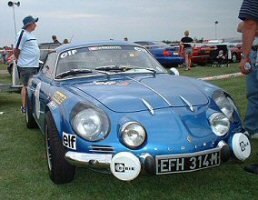
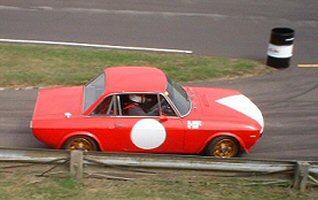
Meanwhile Bertone was looking for another step up into the 1970’s
for his company… another marketing and engineering success to
match his Lamborghini Miura. He again turned to the Miura’s stylist
Marcello Gandini. They took apart a Lancia Fulvia. In the end only its
V4 engine, gearbox and subframe was used, in a new prototype - ‘Project
Zero’ was created. This low, highly stylistic wedge shape
– with a flat windscreen retaining the precise angle of the ‘wedge’
up from the bonnet - did not look at all like the final car.
Soon the ‘0’ acquired the Stratos name tag too. According
to Nuccio’s biography this came from a glider model in the Bertone
office. Originally they used this name on a new design of ski, but when
the product was not taken up the Stratos name was applied to the car
project instead. In January of 1971 - with a new managing director at
Lancia, Ugo Gobbato - they were ready to inject more life into the Lancia
brand and invited Bertone to show them the ‘0’. He drove
it round to see them! Of course Fiorio recognised all the competition
potential of this configuration immediately. And within weeks Lancia's
intention to proceed was agreed.
The commission was quickly given to Bertone to develop the first design
prototype, leaving the in-house teams to get on with much needed saloon
car projects. And on the 22nd February 1971 Bertone received the contract
to begin work. The specification was quickly agreed through Fiorio.
The car was to have at least 250bhp and weigh no more than 1000kg. In
addition the suspension should be capable of a wide range of adjustment
– to meet the varying surfaces and circumstances of competition
rallying.
So the first design prototype was finished for the Turin Show of October
1971 – finished in white. It still had the Lancia V4 1600cc engine
installed. The lines of this car look very clean – even today
the wedge shaped dart and swept around windscreen look as fresh as ever.
Unique in the Stratos bloodline, with the V4 engine, this car sported
twin windscreen wipers too. Autosport Magazine called it the ‘Lancia
Italia’ – as this was written across its bonnet. As the
design progressed, this car was then fitted with a Lancia 1800cc twin
cam, and then a Dino 206 V6 2.0 litre engine – with an aluminium
cylinder block.
The Dino 246 V6 engine was considered to be the more capable of delivering
a reliable 250bhp - with the cast iron block. Negotiations between Ferrari
and Lancia dragged on and were completed after many months – late
enough to delay Stratos homologation for a season. Production of the
Ferrari engines was then controlled by Ing. Dondo, despite Enzo Ferrari’s
backing, production required Dondo's approval and the politics took
time to resolve. The delays got so bad that Lancia became desperate..
in July 1972 a decision was made to make 500 cars with the Lancia Twin
Cam to gain homologation. This didn’t happen. The politics continued
‘down to the wire’. When, four days after the Stratos’
competition debut on the Tour de Corse in November 1972, Lancia asked
Maserati if they could supply a Bora engine to fit into the Stratos!
This threat seemed to break the log jam at Ferrari with the potential
intervention of their Modena rivals. Despite further proposals to use
the Merac V6 unit, between December 1972 and March 1973 all the contracts
and politics were settled – just in time.
Lancia had their first choice engine – with all the 4-valve per
cylinder performance data they needed. In the mean time the car’s
development continued. Suspension issues had to be addressed. Dallara
was invited to join the team, and quickly recognised some suspension
limitations. The Stratos double wishbone setup had been resolved with
reference to Ferrari’s endurance racing programme – with
smooth tarmac surfaces in mind. A Macpherson strut solution was adopted
for the rear suspension to cope with rallying surfaces and undulations.
So the Stratos' first rally outing, in the November 1972 Tour de Corse
proved a baptism of fire. Of the three production prototype chassis
number 2 was chosen to compete. The car was not strong enough. Its rear
suspension top mounts collapsed and cause retirement. Reports had the
rear suspension acquiring more negative camber on each successive stage.
Before retirement the rear suspension, steering and drive had all been
affected by deformation problems in their mounts. All these areas would
need considerable strengthening. Carburation problems in right hand
corners, and looser synchro modifications (to allow faster gear changes)
were also introduced. Full rallying endurance and competitiveness was
also attained with Abarth ‘back room’ assistance too. Although
the rivalry between HF Squadra Corse and Abarth was a feature of the
seventies, there’s a Lancia reluctance to acknowledge the connection.
On April 8th 1973 the Stratos legend began
on the Firestone Rally in Spain. Munari and Mannucci took their Stratos
to a win. This feat was to be repeated many times down the years, with
Suandro Munari in the forefront of Works success.
International homologation was still required and became a desperate
affair, as it followed so many delays over the engine. A production
run of 500 cars was finally begun for international homologation. And
on July 23rd 1974 Fiorio announced that the necessary 500 cars had been
completed. This was later found to be rather optimistic. As by then
less than 150 had been completed. Homologation was officially achieved
on the 1st October 1974.
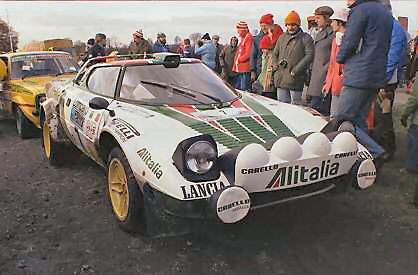
This machine had been built to win rallies, and for the next five years
that is precisely what it did. The gap between the leading rally contender
and the rest has seldom been greater - perhaps only the Delta 4WD and
Integrales achieved this level of dominance.
A sobering
thought is that while the Stratos was ready for international competition
in its first season in 1974, (when it proceeded to walk away with the
championship). In terms of mechanical development and reliability there
were no real technical constraints that stopped this happening during
1973. Teething problems there were, but nothing apart from the suspension
and strengthening issues that threatened the programme. Without the
early political wranglings, and the somewhat laboured assembly of the
500 needed for homologation, the era of Stratos domination could have
begun that much sooner!
Driving
the Stratos
I first had
a chance to drive one of these icons on a trip to Italy in the eighties.
It was one of the 492 homologation road cars made. There it sat with
its purposeful all red stance. I can't remember seeing another Stratos
so devoid of badges stripes and logos. You are suddenly very aware of
how small the cockpit is - or maybe how wide the car is beyond the arc
of its windscreen. Very Ferrari 'P' series. The rest of the body shape
is umistakeably Bertone. You see I've been conditioned by too many X1/9s
down the decades. The way the wedge shaped bonnet yields to the protuding
strong front wheel arch, that active arc profile that transports the
up-curve of the front wedge past the passenger area, and then down twice
as fast and more to the tail. Perfect moving tension - even when the
car's stationary.
Of course this
is the forerunner of the exxie. This is Daddy to the exxie. It is a
masculine car but not a muscle car. And we were going out to play together.
The owner knew enough of my exploits/ antics to realise I would not
be holding back. He suggested a route from our position north of Milan
towards the Alps - and even suggested I should take it out alone - he
was busy before lunch and wanted less distractions for a few hours.
And so I approached the car with keys, sunglasses and a big smile.
I'm not so
sure about the bright red bodywork against the gold painted Campagnola
mag alloy wheels. But these are the standard wheels for the Stratos
(7.5x14). Pirelli soft tyres have picked up a few stones - think the
original had Michelins. The door handle is all X1/9 too. It is starting
to heat up inside in the Italian sun. I recall the unusual door window,
as the front edge drops away first, not me breaking it - its designed
to do that. The buckets seats are shallow and thin - and close set together
- so the driving position is offset. Electrics on, pumps on... yes all
the right noises... gear stick check ah yes, the Ferrari dogleg first
with reverse gated above... one prod of throttle as instructed... clutch
out and a symphony starts to play behind me. The staccato of a V6 plus
Ferrari head and exhaust sings away. I blip the throttle twice just
for the music. The inlet note is different to the Dinos I have driven.
Dials are all reading good. I try the lights. Sorry Lancia, its a habit
out of my exxie days - I like to see if the headlight pods come up together.
They do and somehow all is well with the world (you need to know X1/9s
to understand).
There's a waft
of scent from the garden on a gust of wind. It is of flowers in the
sunshine. Then behind it is another from the exhaust. It tells me the
engine is warming to the task, and that the car is bang on tune. I select
first and feel for the bite point on the clutch. We are off. The engine
note changes with more aggression. Response is immediate. I change up
deliberately - waiting to see if the Ferrari box needs more warming
up. Yes the sensation on the stick tells me all is not yet ready in
the cog department. Second and third would grate if forced. I double
de-clutch for a bit. There's a layer of light dust on the dash caught
in the sun. I recall reading the Stratos prototype dashboards came from
the Fiat 127. Ferrari engines need regular exercise. This one is pleased,
keen, to be in action again. Vision is fine - it gives a feeling of
nothing much ahead of you. You the steering the dash and then the road
- because the car falls away so steeply. I stop at a junction to turn
left with my senses monitoring the car... a gap behind an Alfa is coming...
no it isn't coz the Alfa driver halved his speed as he went passed me.
It happens again... and again. Then one guy lets me out. I with a wave
of my habd in thanks I drop a little rubber on the turn - so he can
hear the engine too - coz I guess that's the best way to say thank you.
He's smiling anyway.
These light
throttle blips have the car flick into action easily. The Stratos betrays
the intention behind its design here. It is not for cruising, but for
rapid changes in direction on the run. Now I must listen as we go through
the full conversation together. These are question and answer sessions.
What do you prefer if I want to go here, then there? What happens if
I do this? The steering is a quick rack. Set up a line of cones, and
this car would skip through them at speed. Once clear of traffic we
up the pace. The car is very solid through long, constant throttle corners
too. After some miles I get to rising ground and more bends. I try setting
the tyres against the turn, and then applying power too - so the car
gets into sideways attitude against its tyres and I can power slide
without corrective lock. The car is dynamically stable - it doesn't
tend to spin here. So you can either use throttle first or lock first
in a slide.
I take it
more towards the sideways limits. And yes the same traits as the X1/9
are present. The one sin is to lift off. Providing you can keep the
balance in the corner all is well. You have to retain front grip for
the steering to work, and adding power will bring the tail out and around.
Providing the front tyres are traveling forwards more than sideways
then a slide is controllable with opposite lock. Better to use this
with a bit more power. But step the car too far out of line, or change
the contribution of the rear by lifting the throttle and you will spin
out. Of course I don't quite go there in a loaned Stratos on Italian
public roads! But you can trust me... I take it to the entrance of this
place and know what would happen if I enter!
Into the Alpine
foothills I encounter something like a lorry park off from the road.
If I'm careful not to rip up stones onto the body work I could try some
more semi-loose surface turns here. This doesn't tell me too much more.
The car is inherently well behaved - the only manoevre it doesn't do
well is what I would call the 'wide-arched Escort' turn, when the rally
car is intitiated into a reverse corner attitude, then set out beyond
the angle of the corner on entry, and goes through the apex adopting
more of this attitude, to be recovered with more opposite lock (sometimes
on two locks) prior to full throttle on exit. Its often refered to as
the pendulum swing. And the Stratos doesn't like it.
Up into the
Alps we have a glorious day and a fabulous time. The engine's notes
echoing off the walls of the valleys. Hard revving up the box is what
these engines were built for, and I give it some 'stick'. I'm not sure
who is enjoying this more - is it me or the car? On the way back down
I'm more knowledgeable of the autostrada and roads, we move towards
full revs in the corners. The lightness of feel apparent at slower speeds
is less apparent, and as the outside rear tyre is fully loaded with
car and engine weight it gives way to provide a further form of oversteer.
Again sudden lifting is an option to be rejected. The car needs to be
carressed at these speeds. On second thoughts maybe the tyres were not
quite right for the car at this point. Transitions will occur suddenly.
Anyone who ventures forth on a track day should become fully fluent
in the car's lingo - especially fast, on the limit, tarmac behaviour.
There is little I could ever describe as laid back about the Stratos.
But it isn't any sort of beast in the big V8 sense. It likes fast response,
and anticipation ahead of its quick reactions. It is - full on - a driver's
car. You don't get one of these for motorway cruises and comfort. If
there was ever a car that 'tells you exactly what it does on the can'
this is it. And me? I had a fabuluous unforgettable dusty Italian summer
day washed down with just the right amount of chiled Italian wine and
generous humourful Italian host. Great Days.
SFC
Gallery
